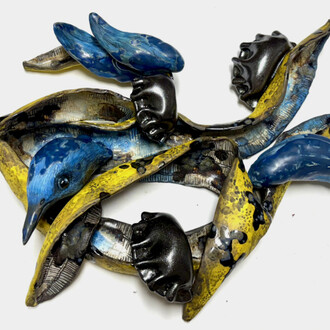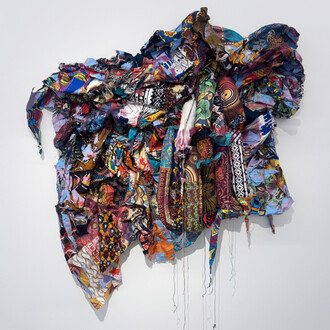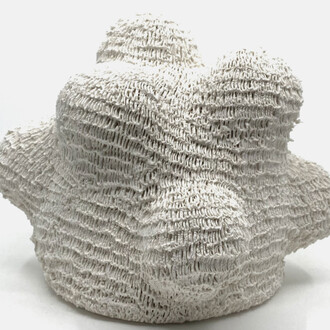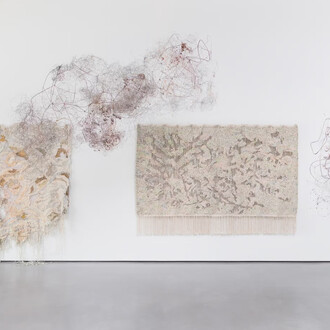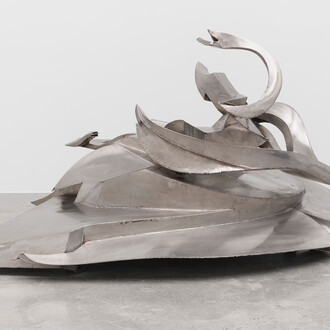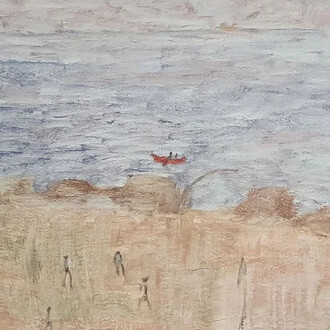Mindy Solomon Gallery is proud to introduce to the United States the solo exhibition debut of Tel Aviv based artist Shai Yehezkelli.
He was born in Jerusalem in 1979 and resides in Tel Aviv. Raised as an Orthodox Jew, Yehezkelli no longer practices at that level of observance, but continues to be fascinated by the objects associated with ritual practice. In an interview with arts blog Young Space, Yehezkelli opines:
“Well, yes. I was always interested in religion and specifically in Judaism. Maybe it has to do with the fact that I was educated in religious schools and grew up as an orthodox. Today I am very far from this environment, yet I am still infatuated with the rituals, and I keep finding its connections to territory that art claims to own in our culture. I like to play with the image of the Shofar, for instance, so that it’ll be understood as a pipe, or Tefillin as a modern black square. The aura is the same, the terminology is similar. Yet, art always fails to deliver what religion constantly gains.”
Additionally, Yehezkelli states: The “Wandering Jew” is a Christian anti semitic myth, originated during the early medieval times, consisting of a narrative in which a Jew who taunted Jesus on the way to the Crucifixion and was then cursed to walk the earth until the Second Coming. Until then, this symbolic Jew shall not have a safe haven, a ground to stay on and he will be forever wandering and separated from his people, forever running away from its rightful prosecutors. Through the years, the myth has expanded so that this Eternal Jew became a threat as well: In his travels he exploits and harms the Christian people he encounters.
However, my interest in religious identities and myths, especially this one, does not stem from spiritual or nationalist drives, but rather from contemporary concerns. Recently, I am interested in the image of the eternal Wandering Jew in light of the current worldwide migrant crisis. Although we are experiencing the highest migration numbers in history, the legitimacy of nations and religion only seems to strengthen. Failing to see the resemblance between this ancient legend and contemporary fears and incitement towards refugees will, I believe, eventually lead to the same horrors humanity lead herself to during the last millenium.
The title of Shai’s show, Maarava, means Westward. The West signifying an opportunity to disconnect from the intensity of continued introspection that is the plight of the artist, compounded by living in the fish bowl of Israel and the Middle East. His work is very much about identity and place, and the ongoing search for a sense of home in the world.
Yehezkelli’s paintings often reflect a humorous irony. The kind of effect one experiences when receiving joyous news tinged with sorrow. Deeply mystical and gestural, some images feel like simple sketches while others are heavily impasto paintings with multiple layers. Moving and sentimental, Yehezkelli invites the viewer to experience a multiplicity of emotions much like a visit to the holy land.
This exhibition, long in the making, truly reflects one of the longstanding objectives of the Mindy Solomon Gallery- to invite a sense of community and conversation. We look forward to furthering the diaspora dialog.





